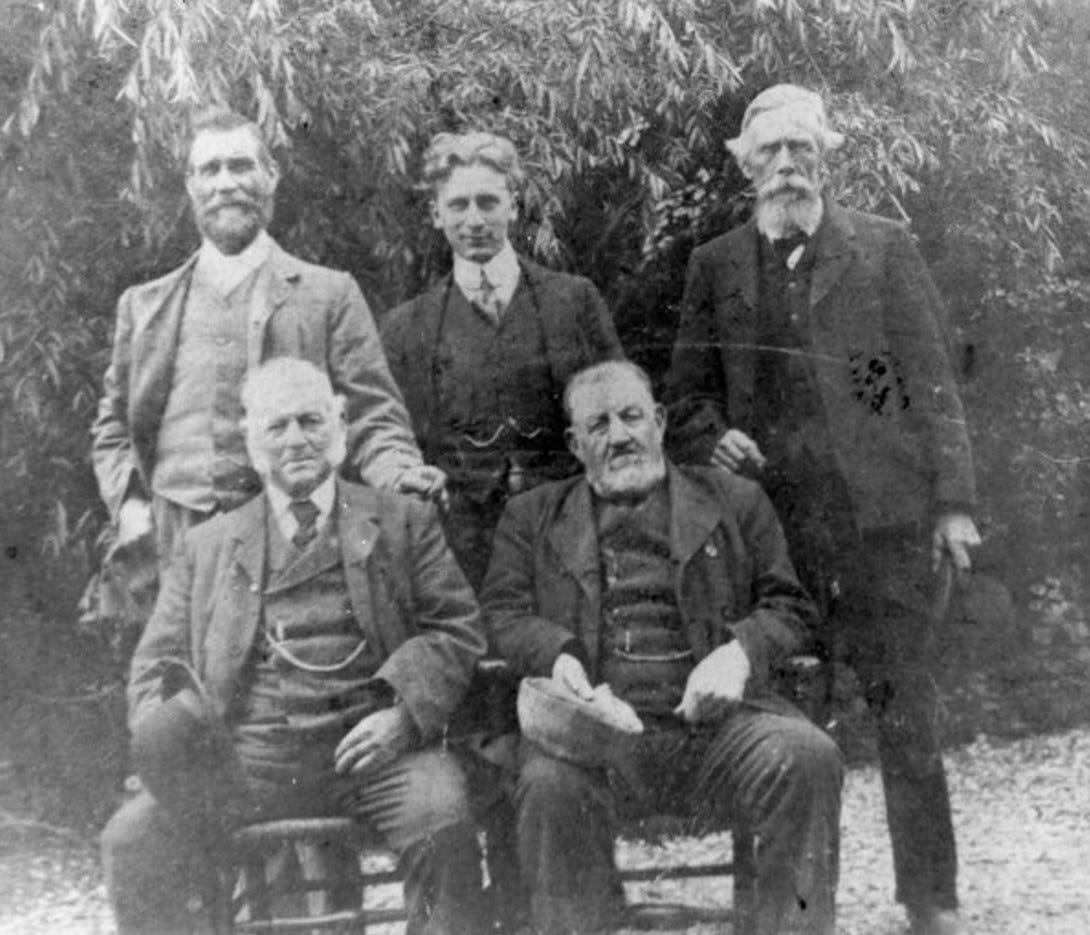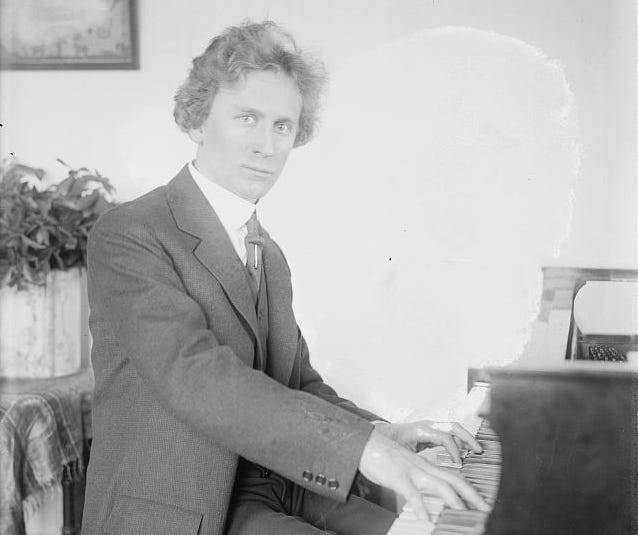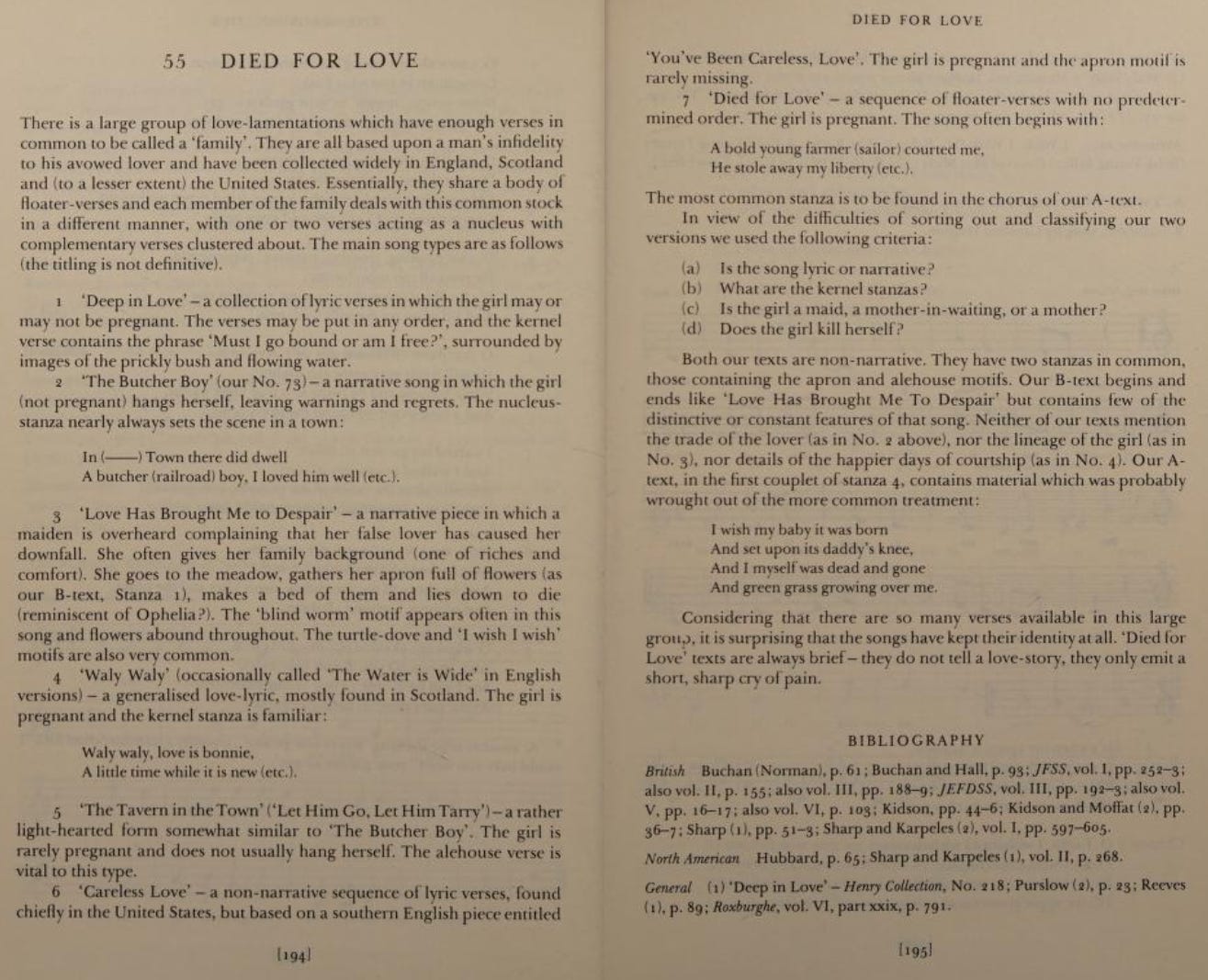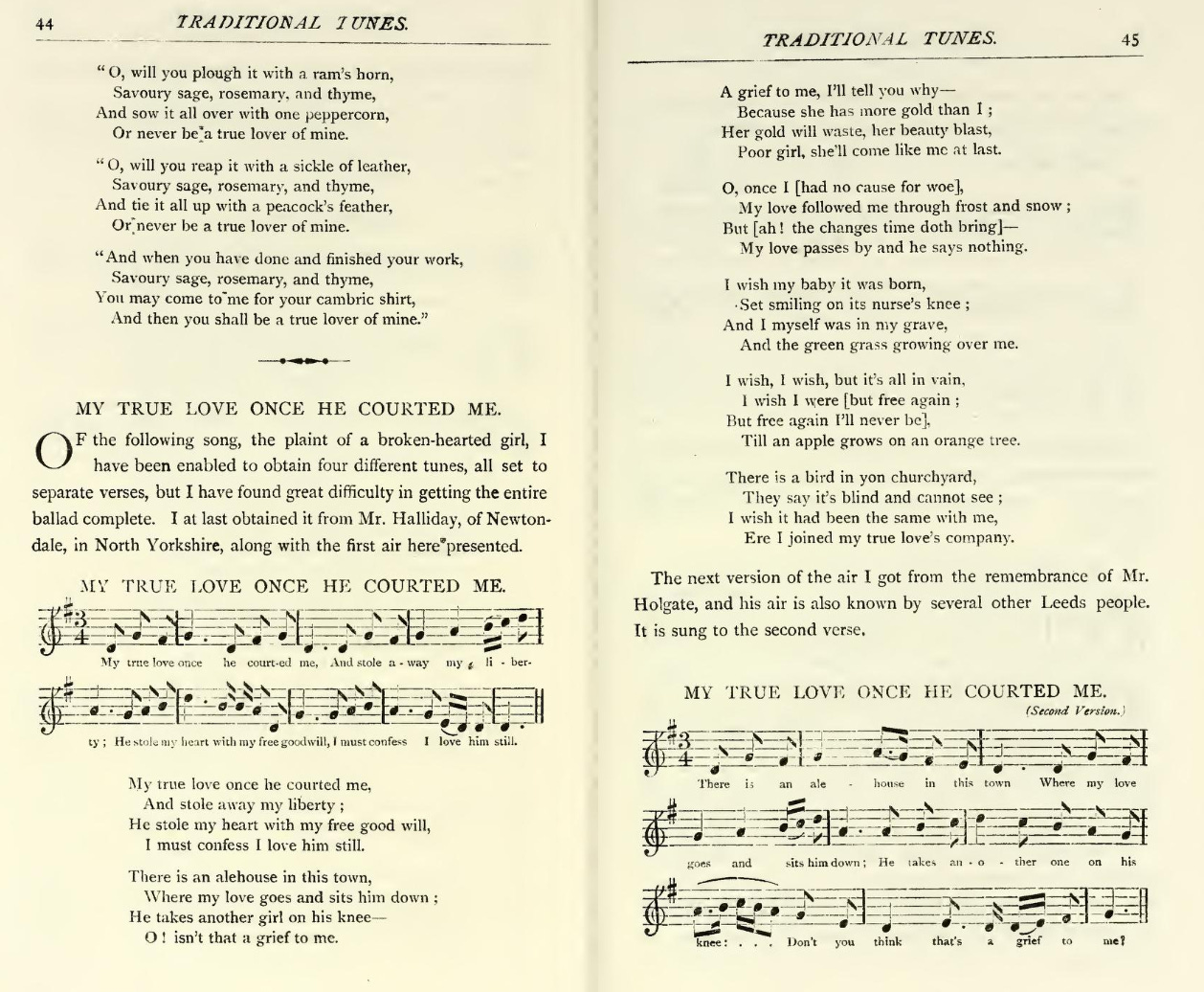ROUD 60: The Brisk Young Sailor / Died for Love
AKA: I Wish, Will Ye Gang Love?, There is an Alehouse, A Bold Young Farmer, There Is a Tavern in the Town, The Butcher's Boy, I Wish My Baby Was Born, I'll Hang My Harp on a Willow Tree
Note: With this ballad, I have discovered there is a limit to the number of characters available in the subtitle shown above, so apologies for its incompleteness. You get the idea though. There are a huge number of very different titles - could it be the most diversely-titled ballad of all? I don’t know, that’s a job for other researchers. Suffice to say, the Roud index lists 644 entries for the song, and even a brief scroll displays very few duplicate names.
This is one of those songs that Francis Child decided not to put in his collection. He would certainly have heard it, since it was very popular from the early 19th century onwards. He most likely omitted it as the story, such as it has survived in its worn-down written form, seems to be a collection of fragmentary ballad tropes, and doesn’t have (or perhaps lost over time) the great sweeping narrative arc so often found in the Child Ballads.
Music
Here is an incomplete Youtube playlist; incomplete for reasons of the ubiquity of this popular ballad, and the fact that it seems that historically everybody gave themselves carte blanche to call it whatever random collection of words came to them at the time, so it can be tricky to mop up all the versions. Also, you will find many versions of the tune in rendered in brass band format under the title “The Brisk Young Sailor” - Percy Grainger collected a number of tunes including this one in Lincolnshire, and arranged them in his “Lincolnshire Posy” medley for wind bands, and they are apparently a popular part of that instrumental repertoire.

It was Percy Grainger’s collecting exploits that led to the first ever commercial folk song recordings in 1906-1908. Grainger had heard farm estate manager Joseph Taylor singing traditional songs in a singing competition in Lincolnshire in 1905, and subsequently invited him to London to make a number of wax cylinder recordings, including his version of Died For Love:
Martin Carthy sang this version on his 1969 album Prince Heathen:
A mere 45 years later, he and Eliza Carthy resurrected Mike Waterson’s unrecorded version and recorded it on their 2014 album “The Moral of the Elephant”. Here is a magical live recording where they share the provenance of this wonderfully fleshed-out agglomeration of disparate parts, and tell the story of its rediscovery.
I’m not going to do Mainly Norfolk’s job of listing almost every version available but I’ll share a couple more.
Here is a snippet of Bert Lloyd’s version. I couldn’t find a digital version anywhere - it’s only available on his “Street Songs of England” (or “English Street Songs” depending on the pressing) 1962 LP. This is my imperfect digitisation.
From the more recent end of the spectrum, here’s Hannah James & Sam Sweeney. They recorded this for their lovely Catches and Glees album - this is a live version:
Finally, here is the brilliant Gemma Khawaja with a real slice of the contemporary tradition in action - an unaccompanied sing in a Norfolk folk club in 2016.
If you want a far more complete overview, try this episode of the Fire Draw Near podcast. Ian’s characteristic modesty belies the impressive coverage of the ballad and its bewildering smörgåsbord of offshoots.
Percy Grainger
Australian born composer Grainger is quite pivotal in folk history mainly thanks to his early use of the phonograph to record English folk singers at the turn of the 20th century, and his later adoption of folk themes in his classical works. (For more complete discussion of his life and work you could read the acclaimed biography by John Bird, or even visit the Grainger Museum in Melbourne, Australia.) In musical terms his views were highly progressive for the times, believing all forms of music to be democratically equal, from folk and jazz to classical, from amateur to gifted professional, it all had equal value, and should be treated as such. No doubt this is what drove his interest in ethnomusicology, and inspired his priceless recordings of some of the old singers such as the aforementioned Joseph Taylor.
Outside of music, he was a somewhat avant garde figure who caused eyebrows to be raised in conservative society with his love of flamboyant homemade clothing and his well documented sexual preferences. Neither of these traits raise an eyebrow today, unlike his views on race - he had clearly been influenced by some of the more insidious eugenic theories of the day, and was outspoken in his views that Nordic people were somehow genetically superior to anyone else, and he also insisted on using “English” versions of classical terminology rather than the orthodox Italian “foreign” terms.
Some Sources
Quite a lot of scholarship on this song comes in comparing the different variations. Ewan MacColl and Peggy Seeger do their best to unravel some of it in their essential volume “Travellers’ Songs from England and Scotland”. This is a collection of songs they personally collected between 1962 and 1976, and here’s what they found within the “Died for Love” universe:
If that’s not enough ballad taxonomy for you, this seemingly endless page on Bluegrass messengers is the terrifying last word on the different versions and families of this ballad.
For a northern take on the song, we turn to the always informative Frank Kidson, from his 1891 “Traditional Tunes”, who has a version from North Yorkshire entitled “My True Love Once He Courted Me”.
The ballad also prospered in the US. Here is a version from Indiana, bearing the possibly relatable title “Love Has Brought Me To Despair”.
The other “Died for Love”
It was inevitable that there would be confusion sown by a song with so many titles, namely when those titles correspond with others. In this instance, it’s Roud 18828. Although the similarities with the Roud 60 are clear - I think the perceived wisdom is that they do all draw from a simlar well of fragments, but the central plot-point (trigger warning: suicide) differs enough - I’m sure there was a compelling reason not to list them together as variations of the same song. Anyway, here is an interesting modern take on that one from German-based trad/techno artist Michael Culme-Seymour — aka Marlais (interview with Marlais here).
Draft pages and audio guide
Keep reading with a 7-day free trial
Subscribe to Sing Yonder: A Practical Guide to Traditional Song to keep reading this post and get 7 days of free access to the full post archives.








